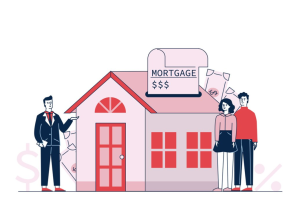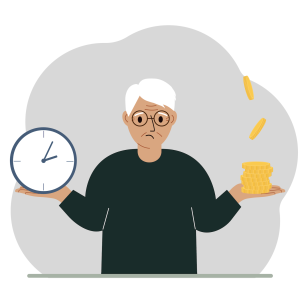New data from Hargreaves Lansdown has brought to light a concerning reality for many UK households: one in five (18%) households who have had to remortgage onto a higher rate since the end of 2022 have ‘poor’ or ‘very poor’ financial resilience. This statistic underscores the financial strain that many families are facing in the current economic climate.
The Impact of Remortgaging
The research estimates that approximately 1.5 million people will need to remortgage throughout 2024. The shift from lower mortgage rates to significantly higher ones has left many households financially stretched. For those who have already remortgaged, the monthly budget has been severely impacted, with just £315 left at the end of the month, compared to £410 for those yet to refinance. This decrease of £95 highlights the additional burden placed on these households.
Sarah Coles, Head of Personal Finance at Hargreaves Lansdown, pointed out the severity of the situation, stating, “Remortgaging remains a horrible headache, but the pain is easing slightly, and it’s nothing compared to the agony renters are enduring.”
The Struggle for Renters
The situation is even more dire for renters. Over half (54%) of renters score ‘poor’ or ‘very poor’ for overall financial resilience. Unlike homeowners, renters have not seen significant improvements in their financial stability over recent years. The proportion of renters who are in arrears has risen by 3.5%, and those worried about their debts have increased by 10 percentage points since before the pandemic.
Renters with children and those over 50 are particularly vulnerable. Almost all renters with children in the lowest fifth of earners (99.6%) have poor or very poor resilience. This group has emergency savings to cover just two weeks’ worth of essential expenses, far below the recommended minimum of 3-6 months. Older renters (over 50) also face significant financial challenges, with almost two-thirds (64%) scoring poor or very poor, reflecting lower incomes and financial setbacks throughout their lives.
A Slight Silver Lining for Remortgagers
Despite the overall grim picture, there is a slight improvement on the horizon for those needing to remortgage. Coles notes that those on fixed deals have been shielded from the worst impacts so far, benefiting from wage rises without yet experiencing higher monthly mortgage payments. As rates have started to come down from their peak, the increase in mortgage payments for those remortgaging now will not be as steep as for those who did so earlier.
The Bigger Picture
Households with mortgages tend to be in a stronger financial position overall, with around three-quarters (73%) having sufficient emergency savings and more than half (57%) having enough money left at the end of the month to maintain resilience. However, the overall picture remains concerning, particularly for renters and those with lower financial resilience.
Conclusion
The data from Hargreaves Lansdown paints a troubling picture of financial resilience across the UK. With significant numbers of households struggling to manage higher mortgage rates and the ongoing cost-of-living crisis, the need for comprehensive financial support and planning is more critical than ever. Policymakers and financial institutions must address these issues to improve financial stability for all households, particularly the most vulnerable.






